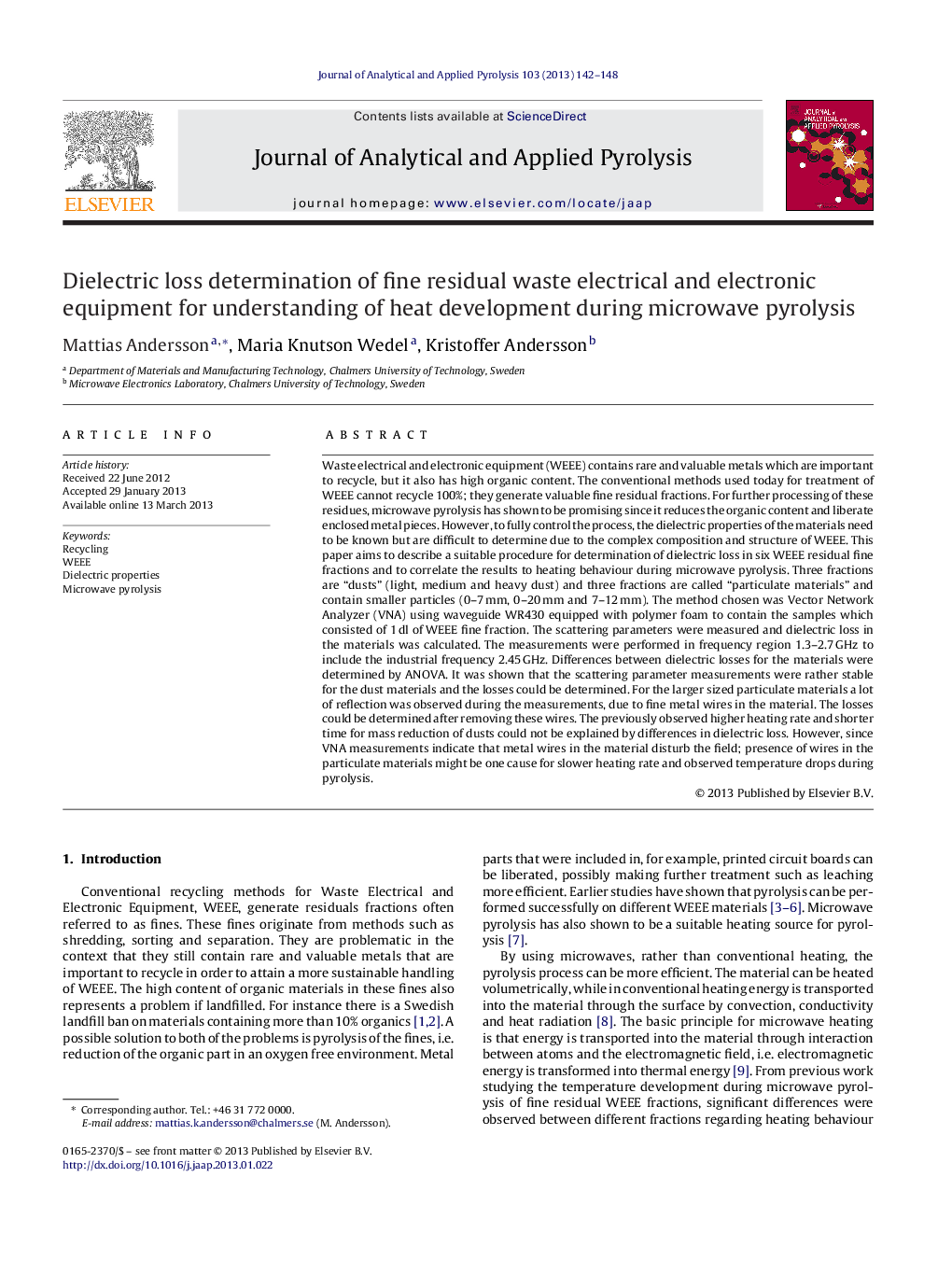| Article ID | Journal | Published Year | Pages | File Type |
|---|---|---|---|---|
| 1197181 | Journal of Analytical and Applied Pyrolysis | 2013 | 7 Pages |
Waste electrical and electronic equipment (WEEE) contains rare and valuable metals which are important to recycle, but it also has high organic content. The conventional methods used today for treatment of WEEE cannot recycle 100%; they generate valuable fine residual fractions. For further processing of these residues, microwave pyrolysis has shown to be promising since it reduces the organic content and liberate enclosed metal pieces. However, to fully control the process, the dielectric properties of the materials need to be known but are difficult to determine due to the complex composition and structure of WEEE. This paper aims to describe a suitable procedure for determination of dielectric loss in six WEEE residual fine fractions and to correlate the results to heating behaviour during microwave pyrolysis. Three fractions are “dusts” (light, medium and heavy dust) and three fractions are called “particulate materials” and contain smaller particles (0–7 mm, 0–20 mm and 7–12 mm). The method chosen was Vector Network Analyzer (VNA) using waveguide WR430 equipped with polymer foam to contain the samples which consisted of 1 dl of WEEE fine fraction. The scattering parameters were measured and dielectric loss in the materials was calculated. The measurements were performed in frequency region 1.3–2.7 GHz to include the industrial frequency 2.45 GHz. Differences between dielectric losses for the materials were determined by ANOVA. It was shown that the scattering parameter measurements were rather stable for the dust materials and the losses could be determined. For the larger sized particulate materials a lot of reflection was observed during the measurements, due to fine metal wires in the material. The losses could be determined after removing these wires. The previously observed higher heating rate and shorter time for mass reduction of dusts could not be explained by differences in dielectric loss. However, since VNA measurements indicate that metal wires in the material disturb the field; presence of wires in the particulate materials might be one cause for slower heating rate and observed temperature drops during pyrolysis.
► Method to measure relative dielectric loss of fine fractions of electronicwaste. ► Metal wires affect loss measurements by reflection and resonance. ► Reflection from metal wires could possibly affect microwave heating of WEEE. ► Differences in heating could not be explained by measured different dielectric losses.
